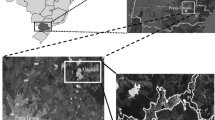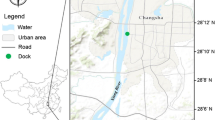Abstract
Fish are an important source of nutrients in human nutrition. Although arsenic (As) is considered potentially carcinogenic for human being, very little is known about its toxicity in fish biology. To increase our knowledge of the effect of exposure to waterborne As on fish, gilthead seabream (Sparus aurata) were exposed to 5 μM As2O3 and the bioaccumulation of macronutrients (Ca, K, Mg, Na, P), micronutrients (Fe, Mn, Zn) and Potentially Harmful Elements (As, Cd) was determined using spectrometric techniques. All elements were determined in the muscle and liver of non-exposed fish and those exposed to As for 2, 10 or 30 days. The concentrations of K, Na, Mg, Mn and Zn (in muscle) and Fe and Mn (in liver) of control (non-exposed) fish were higher than those determined in exposed fish. Furthermore, neither As nor Cd accumulated in the edible part (muscle) of seabream and were only evident in liver after 30 days of continuous exposure to As, but both concentrations remained below legally established limits.






Similar content being viewed by others
References
Abdallah, M. A. (2008). Trace element levels in some commercially valuable fish species from coastal waters of Mediterranean Sea, Egypt. Journal of Marine Systems, 73, 114–122.
Agency for Toxic Substances, Disease Registry (ATSDR) (2011). Detailed data for 2011 Priority List of Hazardous Substances. Public Health Service, ATSDR, Division of Toxicology and Environmental Medicine.
Agusa, T., Kunito, T., Yasunaga, G., Iwata, H., Subramanian, A., Ismail, A., et al. (2005). Concentrations of trace elements in marine fish and its risk assessment in Malaysia. Marine Pollution Bulletin, 51, 896–911.
Alturiqi, A. S., & Albedair, L. A. (2012). Evaluation of some heavy metals in certain fish, meat and meat products in Saudi Arabian markets. Egyptian Journal of Aquatic Research, 38, 45–49.
Al-Yousuf, M. H., El-Shahawi, M. S., & Al-Ghais, S. M. (2000). Trace metals in liver, skin and muscle of Lethrinus lentjan fish species in relation to body length and sex. The Science of the Total Environment, 256, 87–94.
Anan, Y., Kunito, T., Tanabe, S., Mitrofanov, I., & Aubrey, D. G. (2005). Trace element accumulation in fishes collected from coastal waters of the Caspian Sea. Marine Pollution Bulletin, 51, 882–888.
Brousseau, P., Pellerin, J., Morin, Y., Cyr, D., Blakley, B., Boermans, H., et al. (2000). Flow cytometry as a tool to monitor the disturbance of phagocytosis in the clam Mya arenaria hemocytes following in vitro exposure to heavy metals. Toxicology, 142, 145–156.
Canli, M., & Atli, G. (2003). The relationships between heavy metal (Cd, Cr, Cu, Fe, Pb, Zn) levels and the size of six Mediterranean fish species. Environmental Pollution, 121, 129–136.
Castro-González, M. I., & Méndez-Armenta, M. (2008). Heavy metals: implications associated to fish consumption. Environmental Toxicology and Pharmacology, 26, 263–271.
Cuesta, A., Meseguer, L., & Esteban, M. A. (2011). Molecular and functional characterization of the gilthead seabream β-defensin demonstrate its chemotactic and antimicrobial activity. Molecular Immunology, 48, 1432–1438.
Díaz, S., Martin-González, A., & Gutiérrez, J. C. (2006). Evaluation of heavy metal acute toxicity and bioaccumulation in soil ciliated protozoa. Environment International, 32(6), 711–717.
Domingo, J. L., Bocio, A., Falcó, G., Juan, M., & Llobet, J. M. (2007). Benefits and risks of fish consumption part I. A quantitative analysis of the intake of omega-3 fatty acids and chemical contaminants. Toxicology, 230, 219–226.
Dural, M., Göksu, M. Z. L., Akif Özak, A., & Derící, B. (2006). Bioaccumulation of some heavy metals in different tissues of Dicentrarchus labrax L, 1758, Sparus aurata L, 1758 and Mugil cephalus L, 1758 from the Çamlik lagoon of the eastern coast of the Mediterranean (Turkey. Environmental Monitoring and Assessment, 118, 65–74.
EC (2001). Commission Regulation No. 466/2001 of 8 March 2001, Official Journal of European Communities 1.77/1.
Erdoğrul, Ö., & Erbilir, F. (2007). Heavy metal and trace elements in various fish samples from sir dam Lake, Kahramanmaraş, Turkey. Environmental Monitoring and Assessment, 130, 373–379.
Esteban, M. A., & Meseguer, J. (1994). The phagocytic defence mechanism in seabass (Dicentrarchus labrax L.): an ultrastructural study. Anatomical Record., 240, 589–597.
European Commission (2004). Scientific Cooperation (SCOOP) reports on tasks 3.2.11. Assessment of dietary exposure to arsenic, cadmium, lead and mercury of the population of EU Members States; 2004. Available: http://ec.europa.eu/food/food/chemicalsafety/contaminants/scoop_3-2-11_heavy_metals_report_en.pdf.
Fallah, A. A., Saei-Dehkordi, S. S., Nematollahi, A., & Jafari, T. (2011). Comparative study of heavy metal and trace element accumulation in edible tissues of farmed and wild rainbow trout (Oncorhynchus mykiss) using ICP-OES technique. Microchemical Journal, 98, 275–279.
FAO (2010). http://www.fao.org/fishery/culturedspecies/Sparus_aurata/en (accessed July 2010).
Foran, J. A., Good, D. H., Carpenter, D. O., Hamilton, M. C., Knuth, B. A., & Schwager, S. J. (2005). Quantitative analysis of the benefits and risks of consuming farmed and wild salmon. The Journal of Nutrition, 135, 2639–2643.
Guardiola, F. A., Cuesta, A., Meseguer, J., Martínez, S., Martínez-Sánchez, M. J., Pérez-Sirvent, C., et al. (2013a). Accumulation, histopathology and immunotoxicological effects of waterborne cadmium on gilthead seabream (Sparus aurata). Fish & Shellfish Immunology, 35, 792–800.
Guardiola, F.A., Gónzalez-Párraga, M.P., Cuesta, A., Meseguer, J., Martínez, S., Martínez-Sánchez, M.J., et al. (2013b). Immunotoxicological effects of inorganic arsenic on gilthead seabream (Sparus aurata L.). Aquatic Toxicology 134–135, 112–19.
Guérin, T., Chekri, R., Vastel, C., Sirot, V., Volatier, J. L., Leblanc, J. C., et al. (2011). Determination of 20 trace elements in fish and other seafood from the French market. Food Chemistry, 127, 934–942.
Has-Schön, E., Bogut, I., & Strelec, I. (2006). Heavy metal profile in five fish species included in human diet, domiciled in the end flow of river Neretva (Croatia. Archives of Environmental Contamination and Toxicology, 50, 545–551.
Jarić, I., Višnjić-Jeftić, Z., Cvijanović, G., Gačić, Z., Jovanović, L., Skorić, S., et al. (2011). Determination of differential heavy metal and trace element accumulation in liver, gills, intestine and muscle of sterlet (Acipenser ruthenus) from the Danube River in Serbia by ICP-OES. Microchemical Journal, 98, 77–81.
Jomova, K., & Valko, M. (2011). Advances in metal-induced oxidative stress and human disease. Review. Toxicology, 283, 65–87.
Lozano, G., Hardisson, A. (2003). Fish as Food. University of La Laguna, Tenerife, Canary Islands, Spain. Copyright, Elsevier Science Ltd. All Rights Reserved. FISH/Fish as Food 2417.
Mathews, T., & Fisher, N. S. (2009). Dominance of dietary intake of metals in marine elasmobranch and teleost fish. The Science of the Total Environment, 407, 5156–5161.
Mieiro, C. L., Coelho, J. P., Pacheco, M., & Duarte, A. C. (2012). Pereira ME. Trace elements in two marine fish species during estuarine residency: non-essential versus essential. Marine Pollution Bulletin, 64, 2844–2848.
Minganti, M., Drava, G., De Pellegrini, R., & Siccardi, C. (2010). Trace elements in farmed and wild gilthead seabream, Sparus aurata. Marine Pollution Bulletin, 60, 2022–2025.
Molin, Y., Frisk, P., & Ilbäck, N. G. (2008). Sequential effects of daily arsenic trioxide treatment on essential and nonessential trace elements in tissues in mice. Anti-Cancer Drugs, 19(8), 812–818.
Olmedo, P., Pla, A., Hernández, A. F., Barbier, F., Ayouni, L., & Gil, F. (2013). Determination of toxic elements (mercury, cadmium, lead, tin and arsenic) in fish and shellfish samples. Risk assessment for the consumers. Environment International, 59, 63–72.
Patra, R. C., Swarup, D., Sharma, M. C., & Naresh, R. (2006). Trace mineral profile in blood and hair from cattle environmentally exposed to lead and cadmium around different industrial units. Journal of Veterinary Medicine A, Physiology, Pathology, Clinical Medicine, 53(10), 511–517.
Qiu, Y. W., Lin, D., Liu, J. Q., & Zeng, E. Z. (2011). Bioaccumulation of trace metals in farmed fish from South China and potential risk assessment. Ecotoxicology and Environmental Safety, 74, 284–293.
Reyes-Becerril, M., Salinas, I., Cuesta, A., Meseguer, J., Tovar-Ramirez, D., Ascencio-Valle, F., et al. (2008). Oral delivery of live yeast Debaryomyces hansenii modulates the main innate immune parameters and the expression of immune-relevant genes in the gilthead seabream (Sparus aurata L.). Fish & Shellfish Immunology, 25, 731–739.
Rubio, C., Jalilli, A., Gutiérrez, A. J., González-Weller, D., Hernández, F., Melón, E., et al. (2011). Trace elements and metals in farmed sea bass and gilthead bream from Tenerife Island, Spain. Journal of Food Protection, 74(11), 1938–1943.
Sapkota, A., Sapkota, A. R., Kucharski, M., Burke, J., McKenzie, S., Walker, P., et al. (2008). Aquaculture practices and potential human health risks: current knowledge and future priorities. Environment International, 34, 1215–1226.
Sirot, V., Guérin, T., Volatier, J. L., & Leblanc, J. C. (2009). Dietary exposure and biomarkers of arsenic in consumers of fish and shellfish from France. The Science of the Total Environment, 407, 1875–1885.
Siscar, R., Koenig, S., Torreblanca, A., Solé, M. (2012). The role of metallothionein and selenium in metal detoxification in the liver of deep-sea fish from the NW Mediterranean Sea. The Science of the Total Environment 466–467, 898–905.
Sivaperumal, P., Sankar, T. V., & Viswanathan, P. G. (2007). Heavy metal concentrations in fish, shellfish and fish products from internal markets of India Vis-a-Vis international standards. Food Chemistry, 102, 612–620.
Sprocati, A. R., Alisi, C., Segre, L., Tasso, F., Galletti, M., & Cremisini, C. (2006). Investigating heavy metal resistance, bioaccumulation and metabolic profile of a metallophile microbial consortium native to an abandoned mine. The Science of the Total Environment, 366(2–3), 649–658.
Tsuchiya, A., Hinners, T. A., Burbacher, T. M., Faustman, E. M., & Marën, K. (2008). Mercury exposure from fish consumption within the Japanese and Korean communities. J. Toxicol. Environ. Health (PartA), 71, 1019–1031.
Türkmen, A., Türkmen, M., Tepe, Y., & Akyurt, I. (2005). Heavy metals in three commercially valuable fish species from Iskenderun Bay, northern East Mediterranean Sea, Turkey. Food Chemistry., 91, 167–172.
Türkmen, A., Türkmen, M., Tepe, Y., & Çekic, M. (2010). Metal in tissue of fish from Yelkoma lagoon, northeaster Mediterranean. Environmental Monitoring and Assessment, 168, 223–230.
Tuzen, M. (2009). Toxic and essential trace elemental contents in fish species from the Black Sea, Turkey. Food and Chemical Toxicology, 47, 1785–1790.
Uysal, K., Emre, Y., & Köse, E. (2008). The determination of heavy metal accumulation ratios in muscle, skin and gills of some migratory fish species by inductively coupled plasma-optical emission spectrometry (ICP-OES) in Beymelek lagoon (Antalya/Turkey). Microchemical Journal, 90, 67–70.
Walter, M. D. (1990). Nutritional epidemiology (p. 179). New York Oxford: OXFORD UNIVERSITY PRESS.
Wang, L., Xu, Z. R., Jia, X. Y., & Han, X. Y. (2006). Effects of dietary arsenic levels on serum parameters and trace mineral retentions in growing and finishing pigs. Biological Trace Element Research, 113(2), 155–164.
Wang, X., Zhang, J., Zhao, L., Hu, S., & Piao, F. (2013). Effect of subchronic exposure to arsenic on levels of essential trace elements in mice brain and its gender difference. Biometals, 26, 123–131. doi:10.1007/s10534-012-9599-6.
Yia, Y. J., & Zhang, S. H. (2012). The relationships between fish heavy metal concentrations and fish size in the upper and middle reach of Yangtze River. Procedia Environmental Sciences, 13, 1699–1707.
Zeng, J., Yang, L., Wanga, X., Wang, W. X., & Wu, Q. L. (2012). Metal accumulation in fish from different zones of a large, shallow freshwater lake. Ecotoxicology and Environmental Safety, 86, 116–124.
Zhao, S., Feng, C., Quan, W., Chen, X., Niu, J., & Shen, Z. (2012). Role of living environments in the accumulation characteristics of heavy metals in fishes and crabs in the Yangtze River estuary, China. Marine Pollution Bulletin, 64, 1163–1171.
Acknowledgments
This work was funded by grants from Ministerio de Economía y Competitividad (AGL2011-30381-C03-01) and Fundación Séneca (04538/GERM/06).
Author information
Authors and Affiliations
Corresponding author
Ethics declarations
Conflict of interest statement
The authors declare that there are no conflicts of interest in this work.
Additional information
Highlights
Waterborne arsenic affected the concentrations of nutrients in exposed Sparus aurata.
Neither As nor Cd accumulated in the edible part (muscle) of seabream.
A low level of arsenic accumulation was observed in liver after 30 days of exposure
Rights and permissions
About this article
Cite this article
Pérez-Sirvent, C., Martínez-Sánchez, M.J., López, S.M. et al. Influence of waterborne arsenic on nutritive and potentially harmful elements in gilthead seabream (Sparus aurata). Environ Monit Assess 188, 620 (2016). https://doi.org/10.1007/s10661-016-5598-3
Received:
Accepted:
Published:
DOI: https://doi.org/10.1007/s10661-016-5598-3




